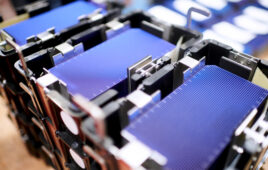RatedPower has integrated a new feature into its design software pvDesign that hybridizes PV plants through AC-coupled battery and energy storage system support.

pvDesign by RatedPower
“We are excited to release the basic engineering of an AC-coupled BESS that will become a fundamental piece of our entire business strategy. This pvDesign new feature is the first step to provide a complete hybrid PV—BESS solution to our clients”, said Ignacio Álvarez, product manager at RatedPower.
IRENA estimates that the deployment of large-scale storage systems in energy markets will increase by 40% each year until 2025. Battery energy storage systems are attractive at this scale because:
They are a solution to overcome the obstacles caused by the intermittent production of renewable energy.
BESS contributes to providing reliable and cheaper electricity in isolated grids and off-grid communities that would otherwise rely on expensive and polluting fossil fuels such as diesel.
From 2010 to 2019, battery prices had decreased by 87%, according to Bloomberg New Energy Finance. Predictions say that by 2030, prices will be reduced by 42.7%.
“The synergies between storage and PV are highly consistent. The predictable daily on and off cycle of solar photovoltaics is well aligned with the battery charge and discharge needs. With the increase of renewables, battery storage has a critical role to play to successfully balance load 24/7,” Álvarez said.
RatedPower customers can now design an AC-coupled BESS. Through its BESS software module, you can include storage into new solar designs or into already existing projects.
Traditionally, BESS sizing is based on a PV plant’s estimated rated power — regardless of available land or BESS requirements, like capacity optimization or electrical requirements. RatedPower has inverted the approach to optimize the area where the BESS is installed and take into account the supply chain duration or capacity optimization.
pvDesign automatically locates the battery containers and the power conversion stations in the defined site. It will take into account the hours of operation of the batteries, calculate the length of the cables or perform earthworks. It will also size the interconnection facility.
pvDesign generates the required documentation for the basic engineering of an AC coupled BESS, including layout, bill of materials and the design report. pvDesign also discloses the energy that is available to charge the batteries.
News item from RatedPower





Tell Us What You Think!